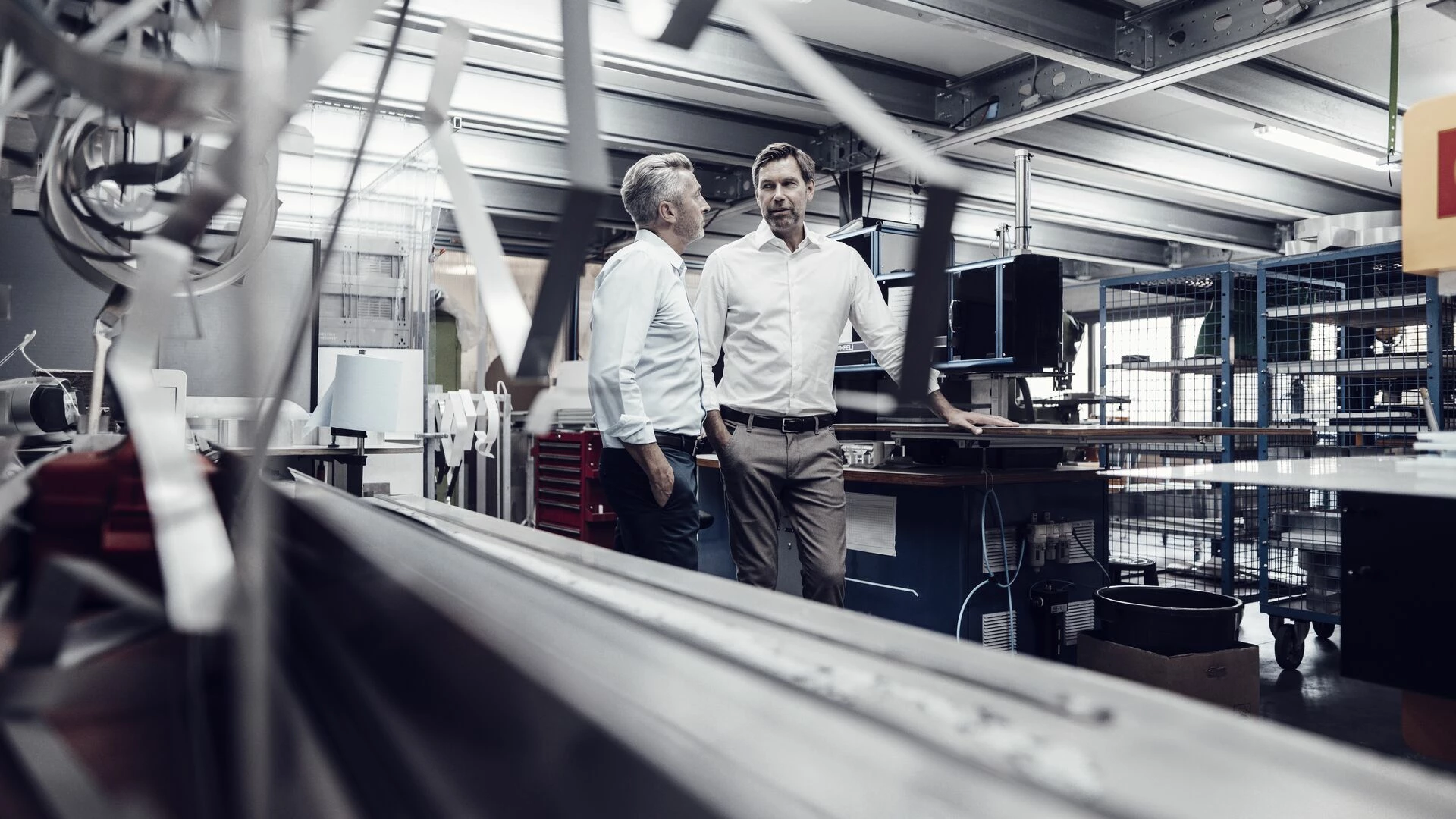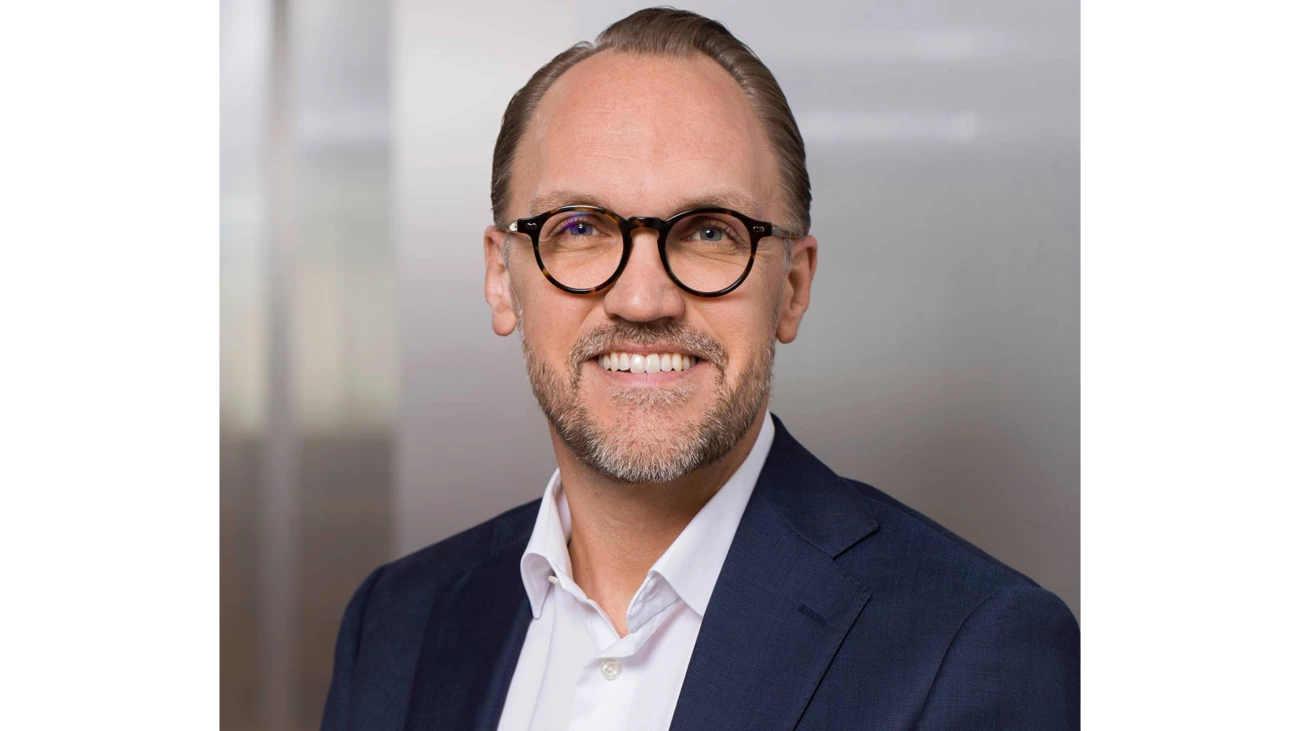Gränges' financial targets
| Average yearly operating profit growth above 10% |
| Return on capital employed above 15% |
| Financial net debt normally of 1-2x adjusted EBITDA |
| Dividend of 30-50% of profit for the year |
In the intricate world of capital-intensive businesses, effective spending decisions can make or break success. Johan Trocmé from the Nordea On Your Mind team sat down with Oskar Hellström, CFO of the aluminium technology group Gränges, to gain insight into their approach to financial decision-making.

How do you make spending decisions in a capital-intensive business? In this Nordea On Your Mind interview from report "How to spend it", author Johan Trocmé asked Oskar Hellström, CFO of aluminium technology group Gränges. Financial targets are defined to provide room for cyclical swings in demand and capex, where capacity investments need to be major to be viable. Maintenance capex is decided locally, and capacity investments and acquisitions are approved centrally, with payouts floored at 30% of earnings and room for more during harvest periods after major investments.
Johan Trocmé (JT): Gränges has a dividend policy of paying out 30-50% of profits over time; what do you think generally about the balance between investing in the business and paying out money to shareholders?
Oskar Hellström (OH): We spend a lot of time thinking about capital allocation issues, which I think are among the most difficult decisions that business leaders have to make, as they can have a major impact on shareholder returns. It is certainly not easy for us at Gränges, as we have a capital-intensive business, and individual investment decisions tend to be large in relation to the existing business, and associated with attractive potential returns but also considerable risks. To help frame these decisions, we, on the one hand, have our long-term financial targets for return on capital, capital structure and dividend, and on the other hand, we have also established a set of capital allocation principles for how to prioritise between risk and expected shareholder return. The higher expected return above our cost of capital, the higher risk profile we can typically accept. If we are not able to invest for expected returns above the cost of capital, we should return capital to shareholders.
At one end of the spectrum for investment opportunities is organic capacity expansion, which typically offers high return – materialising gradually – and high risk. At the other end are payouts to shareholders, which offer low but quick returns, at low risk. Acquisitions are somewhere in between, with a high-risk profile but typically faster returns. Here, the risk and return profile is heavily influenced by the price you pay. We have a highly opportunistic acquisition strategy with a clear ambition of not overpaying for targets. A capital allocation sweet spot within our framework is investment in working capital, rather than capex for capacity expansion. This is normally quick, high return at low risk and something we prioritise when we see opportunities
So what does this mean? At any given point in time, we look at the capital available to us and how we can best prioritise the use of it to optimise the returns for our owners. Since we are in a capital-intensive industry and individual investments are large, the way this plays out in practice is that we have cycles with heavy investments followed by harvest periods with limited investments and strong free cash flow. During the harvest periods, you will typically see higher levels of payouts to shareholders. That said, we have shareholders who appreciate a stable dividend yield, so irrespective of where we are in the investment cycle we aim to distribute at least 30% of net profit to shareholders.
Our capital allocation sweet spot within our framework is investment in working capital, rather than capex for capacity expansion. This is normally quick, high return at low risk and something we prioritize when we see opportunities.
JT: R&D and capital expenditure are arguably both ways of investing in the business; How do they work at Gränges? Centralised or local decisions or budgets? How are options evaluated, and who makes decisions?
OH: Gränges operates with a decentralised business model with a generally high level of autonomy for our different business areas. We believe that decisions are for the most part quickest and best made close to the customers by individuals who know their business and their operations in detail. This is true for capital expenditure and R&D as well.
That said, we do distinguish between what we refer to as maintenance capex and expansion capex from a governance perspective. The frame for maintenance capex, which is capex to sustain and make smaller upgrades to existing assets, is decided on an annual basis. This could typically be equivalent to 60-70% of our depreciation, and be described as what needs to be invested to simply maintain output. Within this frame, each business area president makes the decisions for the individual investment projects. For expansion projects, which aim to increase production capacity or capabilities and are typically larger in nature, the governance is different. These investments typically originate locally but are evaluated based on the priorities in the group strategy, and the decision to invest is made centrally taking the long-term financial targets as well as our capital allocation principles into account. The trigger for an investment project to be escalated for central decision-making is the size, when it exceeds a certain absolute amount. Such projects are approved by group management, and usually ultimately by the board of directors. Acquisitions are evaluated and decided on in a similar way as expansion projects. We believe that this hybrid approach balances local agility with global strategic coherence, optimising our capital use and returns.

JT: Timing for investments can be critical in a capital-intensive business; are major capex projects in your business "lumpy" by nature, or can you spread investments over time? How do you evaluate risks for major capex projects?
OH: This is one of the great challenges in our business. We would love to aim for balanced investments over time and very stable cash flows, but the nature of our industry often necessitates "lumpy" capex owing to the significant scale and cost of certain types of assets that we are operating. For example, if Gränges needs to invest in a new hot rolling mill, it could be because annual capacity of 100,000 tonnes is fully utilised in our existing one. We may currently only need 10,000-15,000 tonnes of additional capacity for the coming two to three years, but an investment in a new hot rolling mill with such small capacity would not be viable. By necessity, our capacity investments typically need to be in major steps, not incremental. The volatility of this capex cycle can, however, to an extent be offset by diversification through greater size. With more product segments, end markets and geographies, total net swings in investment activity across the group become less dramatic. We are not big enough to have a truly smooth capacity capex cycle, but we have become less volatile than ten years ago.
We recognise that it's not always feasible to distribute capital expenditure evenly over time, so our financial targets reflect our ambition to maintain a robust financial position throughout the investment cycle. This generally also enables us to pursue attractive opportunities as they arise. When it comes to risk, we have a defined group risk framework for how to assess risks related to investments. Typically, the risk assessments are done locally and then stress-tested centrally as a part of the decision processes. The stress tests are primarily done though sensitivity and scenario analysis. The risk profile of a certain investment is a key input when applying the capital allocation principles.
| Average yearly operating profit growth above 10% |
| Return on capital employed above 15% |
| Financial net debt normally of 1-2x adjusted EBITDA |
| Dividend of 30-50% of profit for the year |
JT: How do you see acquisitions from a use-of-capital perspective? Is there given room to spend both organically and on acquisitions? Or are acquisitions evaluated as they become available, with funding then needing to be resolved if you go ahead?
OH: In general, I would say that, for us, there is fairly little difference between an acquisition and a large organic expansion investment from a capital allocation perspective. We can do both at the same time provided that they both have expected returns above our target and we have capital available to invest. At the same time, the opposite is true as well; we would pursue neither if we had no financing available.
Having said that, when it comes to acquisitions, we have an opportunistic strategy, and as such it is more difficult to control the timing of when attractive acquisition opportunities arise. Historically, we have raised additional equity to finance an attractive acquisition that came at a time when it could not be fully supported by the existing balance sheet, as we were in the middle of an organic investment cycle. Although it is not necessarily so by policy, my personal opinion is that it is more likely that we would tap the equity market for financing of an acquisition than of an organic expansion investment. Ideally, though, one can solve this with adjusting the timing of capital outflows to avoid raising equity.
JT: Do you have any thoughts on payouts other than the ordinary dividend? You have a leverage target of 1-2x; would you consider any form of additional payout in a situation where you had a substantially lower leverage for an extended period of time?
OH: This is a very relevant question given where Gränges is right now. We aim to finalise the last expansion investments in this cycle during this year and this means that we will gradually move into what we often refer to as the “harvest” phase in the investment cycle. This is when we consolidate investments made and start to drive up asset utilisation. We should then have room to increase output by 25-30% before needing any new material capacity investment. The harvest phase is typically characterised by lower capital expenditure, increasing returns and strong free cash flow. At the same time, our leverage target suggests that we are not seeking a net cash position. Coming back to our principles for capital allocation, this means that we will evaluate returning capital to our shareholders, either in the form of additional dividend payments or as share buybacks. How this will play out over the next couple of years will also depend on other available investment opportunities, the general economic environment and other factors.
Nordea On Your Mind is the flagship publication of Nordea Investment Banking’s Thematics team, which produces research for large corporate and institutional clients. The research does not contain investment advice and typically covers topics of a strategic and long-term nature, which can affect corporate financial performance.
Top decision makers at Nordea’s large clients across the Nordic region receive Nordea On Your Mind around eight times per year. The publication’s themes vary widely, and many are selected from suggestions by clients. Examples of covered topics include artificial intelligence, wage inflation, M&A, e-commerce, income inequality, ESG, cybersecurity and corporate leverage.
Nordea On Your Mind
Sustainability
Amid geopolitical tensions and fractured global cooperation, Nordic companies are not retreating from their climate ambitions. Our Equities ESG Research team’s annual review shows stronger commitments and measurable progress on emissions reductions.
Read more
Sector insights
As Europe shifts towards strategic autonomy in critical resources, Nordic companies are uniquely positioned to lead. Learn how Nordic companies stand to gain in this new era of managed openness and resource security.
Read more
Open banking
The financial industry is right now in the middle of a paradigm shift as real-time payments become the norm rather than the exception. At the heart of this transformation are banking APIs (application programming interfaces) that enable instant, secure and programmable money movement.
Read more